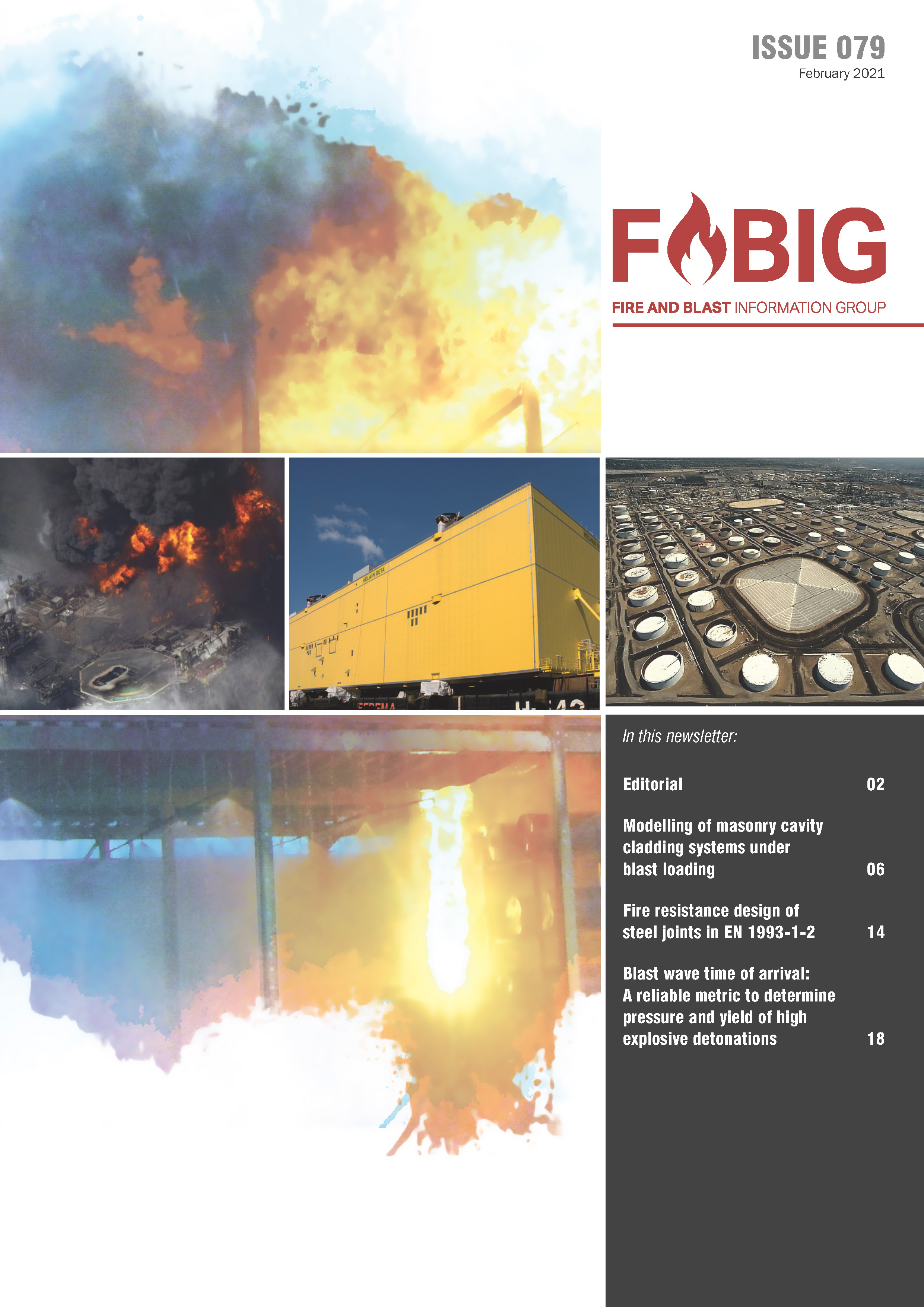Newsletter Issue 079

FABIG Members: Log-in to access all FABIG resources LOG IN
CONTENTS:
This FABIG Newsletter comprises the following:
- Editorial: '30 Years of Fire and Blast Engineering: A Structural Engineer's Perspective'
R. Brewerton - Inoventech - Modelling of masonry cavity cladding systems under blast loading
J. Gu, L. Macorini, B. A. Izzuddin - Imperial College London, Computational Structural Mechanics Group
This paper presents detailed and simplified modelling approaches for masonry cavity cladding systems. A detailed finite element modelling approach, utilising a mesoscale description for masonry, is first presented and validated against experimental results. Its application to typical masonry cavity cladding systems under a range of blast loading is then investigated via a parametric study, including the dynamic response of the cavity system and its ability to transfer blast loads to the surrounding frame. Finally, a simplified SDOF model is presented, which is shown to provide reasonable predictions of the transfer of blast load from the masonry cavity cladding panels to the surrounding structure. - Updates on fire resistance design of steel joints in EN 1993-1-2
Y. C. Wang - University of Manchester
During the recent revision of structural Eurocodes, the recommendations for fire resistance design of steel joints in EN 1993-1-2 have been updated. These updates are concerned with calculations of temperatures in joint components and additional recommendations for welded tubular steel joints. This short article presents these updates and summarises the background research studies that support these changes. - Blast wave time of arrival: A reliable metric to determine pressure and yield of high explosive detonations
S. E. Rigby - University of Sheffield, Department of Civil & Structural Engineering
This article summarises recent research by the author on the topic of blast wave Time Of Arrival (TOA). Firstly, high repeatability of TOA measurements is demonstrated through a compilation of far-field arena testing. Subsequently, two studies are discussed, where TOA was used to infer near-field reflected blast pressure distributions, and to estimate the yield of the 2020 Beirut explosion.
Non-member price: £75.00
Add to Basket
Published in: February 2021
Keywords:
Modelling of masonry cavity cladding systems / Fire resistance design of steel joints / Update to EN 1993-1-2 / Blast wave time of arrival
Online purchase options:
Non-Members of FABIG are able to purchase PDF copies of the FABIG Newsletters.